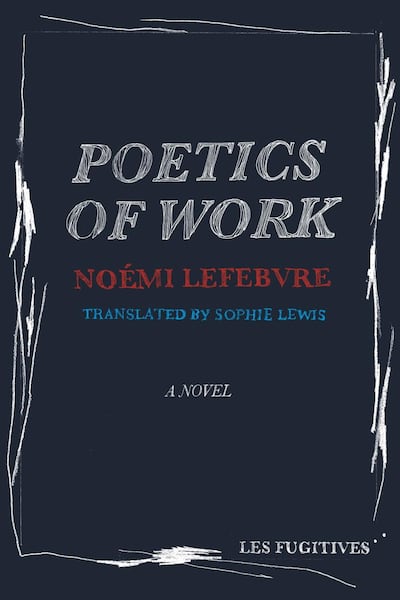Fracture
By Matthew Parris
Profile Books, £16.99
"Genius is linked to childhood trauma" (the "fracture" of the title), Matthew Parris believes, and emerges not despite early troubles but because of them. He doesn't contend that this must happen but that it can. His five categories of childhood trauma are: affliction (physical and mental), isolation (and dislocation), chaos (and family dysfunction), cruelty (and oppression and prejudice) and shock (caused by ruin, death, suicide). He illustrates each category with one detailed life-story plus a range of briefer ones. Edward Lear was struck by epilepsy and severe depression in childhood; Jung's was disfigured by isolation, loneliness and especially his mother's mental illness; Corsican-speaking Napoleon was wrenched from his secure island setting and transferred to alien France. Statesmen, scientists, musicians, painters, writers etc figure in Parris's exposition of his interesting but debatable theory. Brian Maye
From the Grand Canal to the Dodder: Illustrious Lives
By Beatrice Doran
History Press, £20
The area of Dublin between the Grand Canal and the River Dodder has been home to many illustrious people with a wide variety of accomplishments. Nobel Prize for Literature winners WB Yeats and Seamus Heaney lived in Sandymount and former presidents, de Valera and Seán T O'Kelly, in Donnybrook. Mining engineer and philanthropist Alfred Chester Beatty lived on Ailesbury Road, and The O'Rahilly, who died in the 1916 Rising, lived at Herbert Park. Distinguished women who lived in the area were Mary Poppins' writer PL Travers, portrait painter and stained-glass artist Sarah Purser, mathematician and educator Sophie Bryant and writer, broadcaster and cook-book author Maura Laverty. Some of the 70 short biographies in this informative, well-written book are of well-known figures but others, such as Thomas Alfred Jones (major portrait painter, late 19th century), were once well known but are now largely forgotten. Brian Maye
Who We Are: America's Fight for Universal Progress, from Franklin to Kennedy
By Anton Chaitkin
Amazon, $24.99
Fifty years ago, the Anglo-American establishment reversed the policies and principles on which America was founded, introducing globalism based on unfettered free trade. In this first volume, covering the 1750s to the 1850s, Anton Chaitkin looks at the strategists who created the American industrial revolution, arguing they did so to promote human progress rather than from a simple profit motive and that they encountered stiff opposition from the British empire and its American slave-plantation partners who feared industrialisation as a threat to their power. Not unexpectedly, this story is mainly about Americans but there is a very insightful chapter on how the British under Lord Shelburne developed a self-centred economic strategy in late 18th-century Ireland they would afterwards use against America and France. Thought-provoking and very relevant to our times. Brian Maye

Poetics of Work
By Noémi Lefebvre, translated by Sophie Lewis
Les Fugitives, £9.99
Poetics of Work by Noémi Lefebvre, translated by Sophie Lewis, is set against the backdrop of terrorist attacks and rising nationalism in France. It takes the form of exploratory reflections on philosophy, poetry, language and work, interspersed with conversations with the narrator's Socratic "superego" father. The narrator finds relevant insights in Kafka, Kraus and Klemperer, only to slam against the brick wall of her father's gruff, everyman logic. It's a neatly-made point: perhaps civilisation, with all its nuance and complexity, is too easily out-muscled by simpler arguments, even wrong ones. The book's propositions are refreshingly low-tech. We are spared facile arguments about the role of the internet in all this, in favour of considering the deeper roots of societal darkness and its palpability in real life. Rónán Hession
Beginners: The Curious Power of Lifelong Learning
By Tom Vanderbilt
Atlantic Books, £14.99
Why, the author asks, do so many of us stop learning new skills as adults? Perhaps we are simply afraid to be bad at something. Now, nearing 50, Vanderbilt sets out on a fascinating challenge to learn new skills. Along the way he tackles chess, singing, surfing, drawing and juggling and comes to a startling realisation – this was also a voyage of self-discovery. As you learn new things you learn more things about yourself. New skills open new worlds, he claims. But, and he's emphatic on this point, the pleasure and rewards is in the learning and not in attaining mastery. This is less a how-to-do book, more a why to do. Vanderbilt has a nice line in wit and much of what he writes is entertainingly profound. Owen Dawson
The Manningtree Witches
By AK Blakemore
Granta, £12.99
Using historical documents, real-life figures and artistic license, Blakemore's debut novel imaginatively explores the circumstances around the mid-1600s Essex witch hunts. Set in an England ravaged by civil war, protagonist Rebecca West must navigate a community that punishes disobedience where poverty and desperation are rife. Blakemore's background in poetry enables her to write some gorgeous prose on the nature of evil and the social and religious structures that uphold it, personified in self-appointed Witchfinder General Matthew Hopkins. A striking reflection on Puritanical patriarchy and the occult, The Manningtree Witches taps into contemporary feminism while remaining true to its Early Stuart setting. A novel where the devil is – literally and figuratively – in the details. Jessica White


















